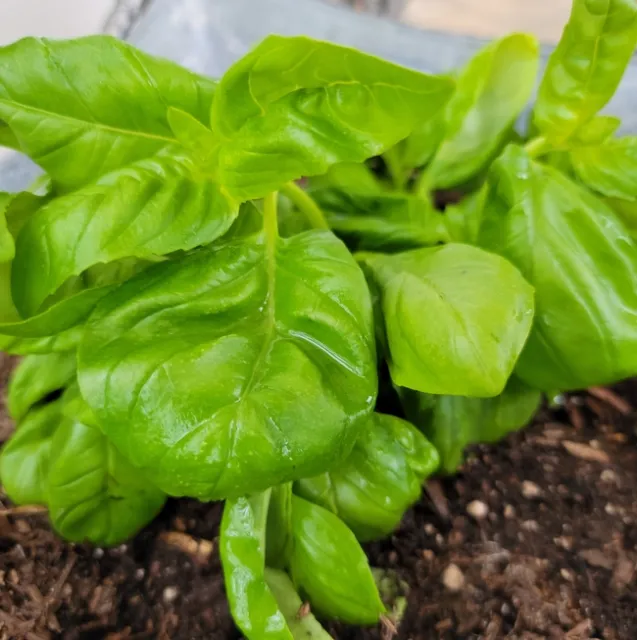
Basil
By Ardis Neilsen UCCE Master Gardener
Common Name: Basil
Scientific Name: Ocimum basilicum
Planting Area: USDA zones 2-11
Size: 2 -feet tall, 1- foot wide
Growing Season: spring and summer
Exposure: full sun
Pruning Needs: remove flowers to encourage leaf growth |
|
Water Needs: regular watering
Basil
One of the most popular and easiest herbs to grow is basil. This 5,000-year-old culinary herb is a member of the mint family and is valued for its wonderful flavor and fragrance. Used in multiple ethnic cuisines, basil is a native of India, Africa, and Asia.
Its mild, sweet, aromatic leaves produce varied scents. Over 60 varieties are grown and feature aromas such as lemon mint, cinnamon, camphor, licorice and more depending on the varietal.
The genus “Ocimum,” the scientific name for basil, is derived from a Greek verb that means “to be fragrant.” Early Greeks considered basil to be the herb of royalty. Hindus in India regard it as holy and refer to it as “Ocimum sanctum” with the common name of Tulsi or holy basil. Holy basil has a clove -like fragrance and is frequently planted around temples.
Basil leaves are smooth or crinkled with colors varying from rich green to deep purple. The flowers are insignificant but are very popular with bees.
This annual plant thrives in warm weather, full sun, moist but well-drained, rich soil. It can be grown on the Central Coast from late spring to early fall. Start seeds indoors and expect germination in seven to ten days. Sow seeds every two to four weeks for a continuous supply. Seedlings can be purchased as well. Plants should be 8 to 10 inches apart.
Fertilize once during the growing season. If grown in pots, a light dose of liquid fertilizer is beneficial. It can also be grown indoors with a minimum of six hours of sunlight.
With sufficiently warm weather, basil plants are ready in about six weeks for harvesting and pruning by pinching flower spikes. This will encourage more leaf growth.
For best culinary flavor, it is recommended to cut leaves for cooking just before using. Basil leaves can be frozen in water in an ice cube tray and stored in a freezer or dried.
Snails, beetles, aphids, and slugs enjoy basil, so watch for them.
We are still here
You can view workshops on Instagram live at slo_mg or visit our You Tube channel at “San Luis Obispo County UC Master Gardeners.”
Visit our website at ucanr.edu/sites/mgslo/ or email us questions at anrmgslo@ucanr.edu.
Our physical offices are closed, but you can still reach us:
San Luis Obispo: 805-781-5939
Arroyo Grande: 805-473-7190
Templeton: 805-434-4105

